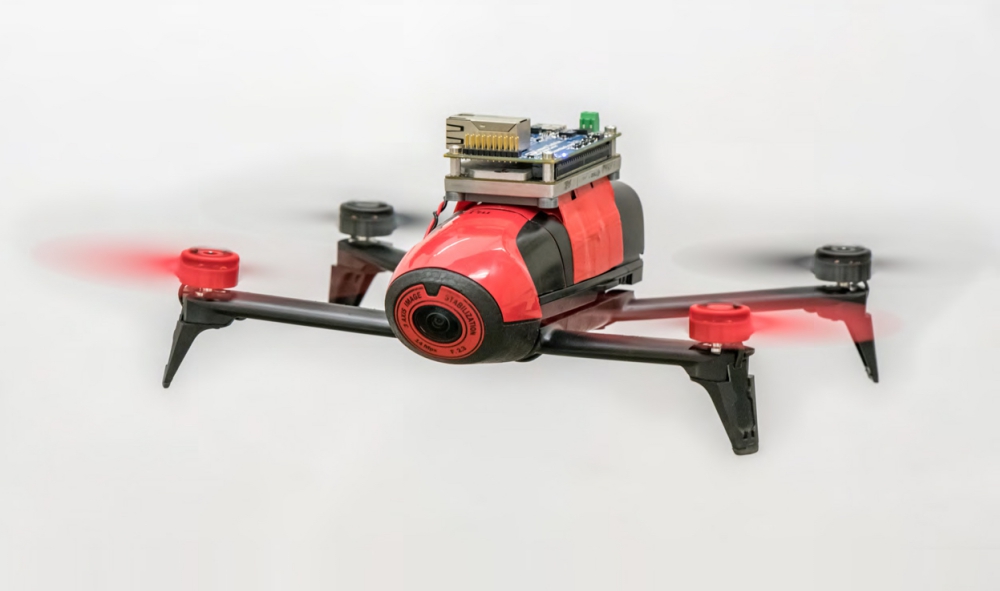The University of Maryland’s Perception and Robotics Group has just published a paper on a system that allows a drone to fly through very small and completely unknown gaps using just a single camera and onboard processing.
The UMD researchers tested their theory with a Bebop 2 drone packing an NVIDIA Jetson TX2 GPU. A variety of different gaps of varying sizes and shapes were cut in a foreground wall, which was covered in newspapers to give them some extra texture.

The modified drone used in UMD’s experiments includes a NVIDIA TX2 module mounted at the top. For sensing, the drone uses its front-facing camera and a downward-facing optical-flow sensor, which combines a camera plus sonar
Abstract:
Although quadrotors, and aerial robots in general, are inherently active agents, their perceptual capabilities in literature so far have been mostly passive in nature. Researchers and practitioners today use traditional computer vision algorithms with the aim of building a representation of general applicability: a 3D reconstruction of the scene. Using this representation, planning tasks are constructed and accomplished to allow the quadrotor to demonstrate autonomous behavior.
These methods are inefficient as they are not task driven and such methodologies are not utilized by flying insects and birds. Such agents have been solving the problem of navigation and complex control for ages without the need to build a 3D map and are highly task driven.

Different parts of the pipeline: (a) Detection of the unknown gap using active vision and TS2P algorithm (cyan highlight shows the path followed for obtaining multiple images for detection), (b) Sequence of quadrotor passing through the unknown gap using visual servoing based control. The blue and green highlights represent the tracked foreground and background regions respectively
In this paper, we propose this framework of bio-inspired perceptual design for quadrotors. We use this philosophy to design a minimalist sensori-motor framework for a quadrotor to fly though unknown gaps without a 3D reconstruction of the scene using only a monocular camera and onboard sensing. We successfully evaluate and demonstrate the proposed approach in many real-world experiments with different settings and window shapes, achieving a success rate of 85% at 2.5m/s even with a minimum tolerance of just 5cm.
To our knowledge, this is the first paper which addresses the problem of gap detection of an unknown shape and location with a monocular camera and onboard sensing.
The paper can be accessed here.
Source: University of Maryland
